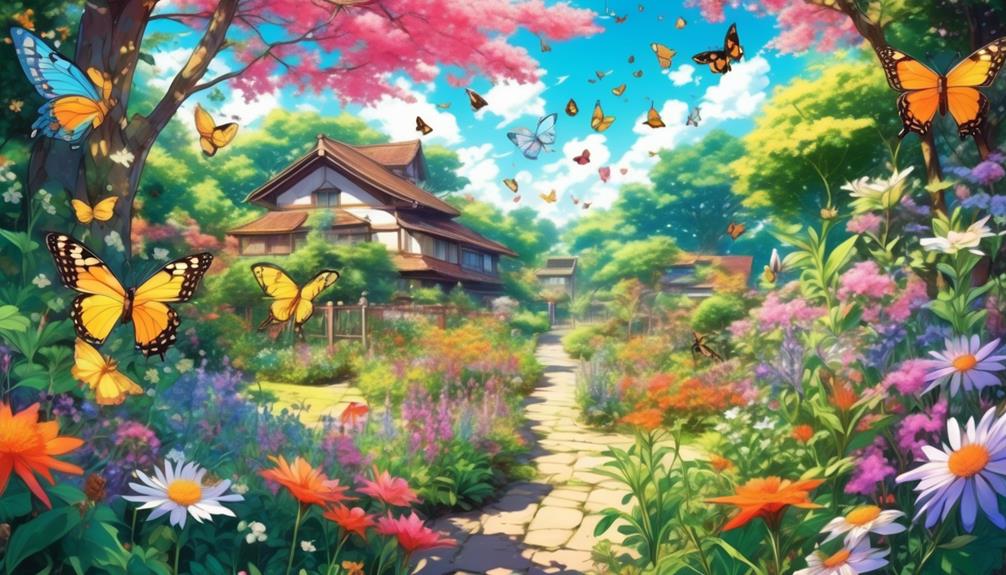How To Become More Self-Sufficient Without Starting a Full-Blown Farm…
Want to start preserving your harvest, making your own soap, or building a backyard root cellar — but not sure where to begin? “Homesteading Advice” gives you instant lifetime access to 35+ practical homesteading books on food preservation, veggie gardening, DIY natural cleaning products (save over $250 per year with this skill alone), brewing, off-grid energy, and a whole lot more…
Click Here To Check It Out Now!
Imagine your garden as a bustling airport, with bees darting from one flower to another like busy travelers. These tiny creatures play a crucial role in pollination, ensuring the growth of fruits, vegetables, and beautiful blooms.
But how can you entice more bees to visit your garden?
Well, my friend, the answer lies in the selection of the right backyard plants. By strategically planting bee-friendly flowers and avoiding harmful pesticides, you can create a haven that attracts these industrious pollinators.
So, let’s explore the world of backyard plants that will not only beautify your garden but also help sustain our planet’s delicate ecosystem.
Attracting Bees…
- Attracting bees to your garden is beneficial for pollinating plants, especially food crops.
- Bee-friendly plants provide a food source for bees, support biodiversity, and increase crop yields.
- Choosing native plants that offer the right flower shapes, colors, and nectar production is important for attracting bees.
- Incorporating colorful flowers and perennial plants in your garden provides a sustainable and long-term source of nectar and pollen for bees.
Benefits of Attracting Bees to Your Garden
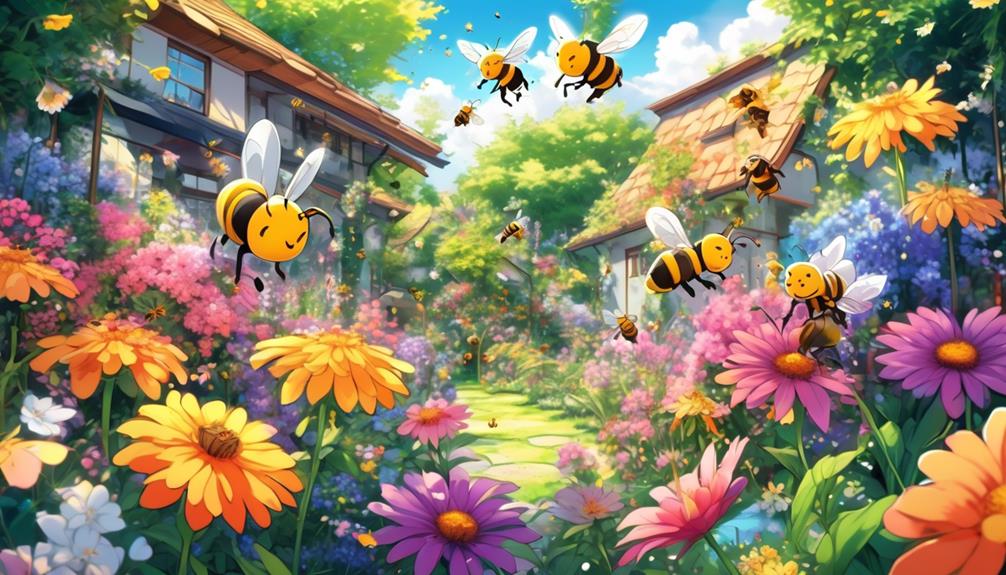
Attracting bees to your garden is essential for the health of the planet and the survival of mankind, as they play a vital role in pollinating plants, including food crops. By creating a bee-friendly garden, you aren’t only benefiting yourself but also contributing to the well-being of the bee population.
When bees visit your garden, they transfer pollen from one flower to another, allowing plants to reproduce. This process, known as pollination, is crucial for the growth and development of fruits, vegetables, and other plants.
Without bees, many of our favorite foods, such as apples, strawberries, and tomatoes, would be in short supply. If you have your own vegetable garden, you’ll also be rewarded with increased pollination and yields of all of your favorite fruits and vegetables.
To attract bees to your garden, you can choose plants that are known to be bee magnets. Some examples include bee balm, echinacea, and lavender.
These flowers produce nectar and have vibrant colors that bees find irresistible. By planting a variety of flowers that bloom at different times throughout the spring and summer, you can ensure a constant source of nectar for the bees in your yard.
By providing a habitat that’s welcoming to bees, you’re supporting their population and ensuring their survival. Keep in mind that bees also need access to clean water for drinking and also benefit from the presence of bee shelters, such as bee hotels. These structures provide a safe place for bees to rest and nest, further contributing to a thriving ecosystem.
‘Did You Know? The economic value of bee pollination worldwide is estimated to be around $125 billion, signifying their crucial role in global food production.’
Importance of Bee-Friendly Plants
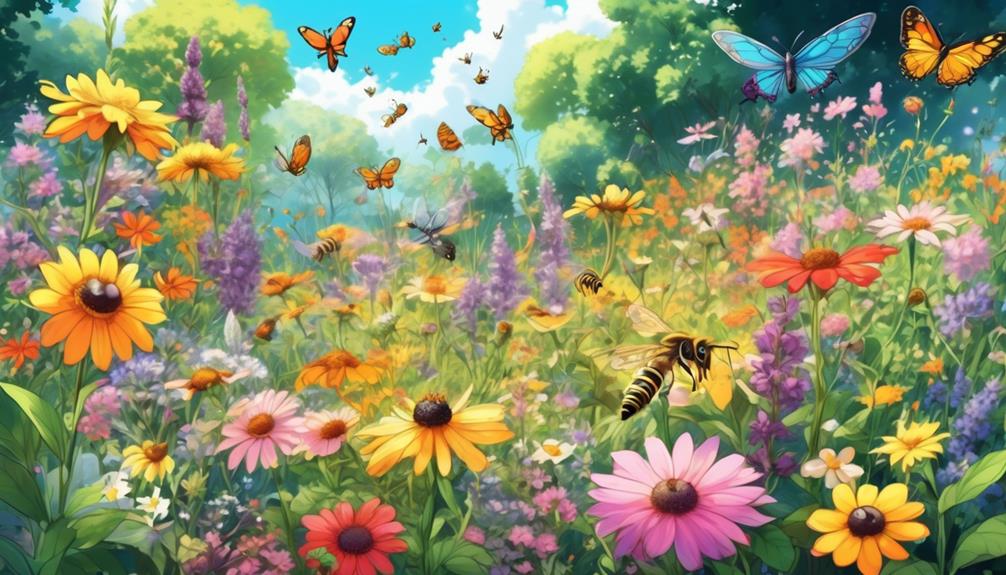
Bee-friendly plants are essential for supporting the global bee population and ensuring the health and survival of our plant ecosystems. By planting these plants in your garden, you can create a haven for bees and contribute to their well-being.
Here are three reasons why bee-friendly plants are important:
- Providing a food source: Bees rely on nectar and pollen as their main food source. By planting flowering plants that produce abundant nectar and pollen, you can attract bees to your garden and provide them with the sustenance they need to thrive. Native plants are particularly beneficial, as they’ve co-evolved with native bees and offer the ideal food sources for them.
- Supporting native bees: There are thousands of native bee species, and they play a crucial role in pollinating native plants. By planting native flowers, shrubs, and trees, you can attract and support these important pollinators. Native bees are often more efficient pollinators than honeybees, so by providing them with a habitat rich in native plants, you’re helping to maintain biodiversity in your area.
- Promoting pollination: Bees are key pollinators for many crops and plants. They transfer pollen from the male parts of flowers to the female parts, allowing plants to reproduce. By attracting bees to your garden, you’re ensuring better pollination for your fruit trees, vegetables, and ornamental plants, leading to increased yields and healthier plants.
‘Did You Know? Bees are so important to our ecosystem that Albert Einstein is often (erroneously) quoted as saying, ‘If the bee disappeared off the surface of the globe, then man would only have four years of life left.’ This highlights the crucial role bees play in our survival.’
Choosing Native Plants for Bee Attraction
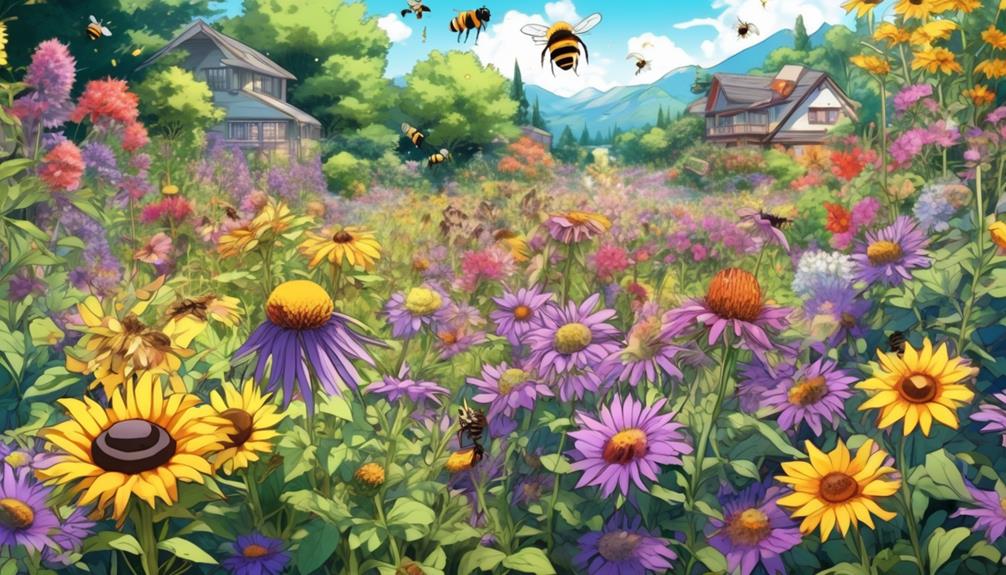
To attract bees to your garden, it is important to choose native plants that provide an abundant food source and support the native bee population. Native plants have evolved alongside native bees, making them well-suited to the bees’ specific needs. They offer the right flower shapes, colors, and nectar production that attract bees for pollination. By planting a variety of native plants, you can create a diverse and attractive garden that will appeal to different species of bees.
Here is a table showcasing some examples of native plants that attract bees:
| Plant Name | Scientific Name | Flower Color | Bloom Time |
|---|---|---|---|
| Purple Coneflower | Echinacea purpurea | Purple | Summer |
| Bee Balm | Monarda spp. | Pink, Red, Purple | Summer |
| Black-Eyed Susan | Rudbeckia hirta | Yellow, Orange | Summer |
| Joe-Pye Weed | Eutrochium spp. | Pink, Purple | Late Summer |
| Wild Bergamot | Monarda fistulosa | Pink, Purple | Summer |
| Goldenrod | Solidago spp. | Yellow | Late Summer |
| New England Aster | Symphyotrichum novae-angliae | Purple, Pink, Blue | Fall |
| Sunflower | Helianthus spp. | Yellow | Summer |
| Milkweed | Asclepias spp. | Pink, White | Summer |
| Lavender | Lavandula spp. | Purple, Blue | Summer |
These are just a few examples of native plants that attract bees. There are many more options available, so it’s worth researching and selecting plants that are native to your specific region to further support local bee populations.
When choosing native plants for bee attraction, consider factors such as flower shapes and colors. Bees have different tongue lengths, so selecting plants with a variety of flower shapes ensures accessibility for different bee species. Additionally, bees have color vision, so choose plants with vibrant colors such as yellow, blue, and purple to catch their attention.
It is also important to consider the growing conditions of the native plants you choose. Consult local resources, wildflower guides, and native plant societies to determine the best native plants for your area. By prioritizing native plants, you are not only providing a valuable food source for bees, but also helping to support the native ecosystem and promote biodiversity in your garden.
“Did You Know? Bees are actually not attracted to the color red. Their color vision is limited to blue, green, and ultraviolet light. That’s why blue and yellow flowers are more likely to attract bees than red ones.”
Colorful Flowers for Bee-Friendly Gardens
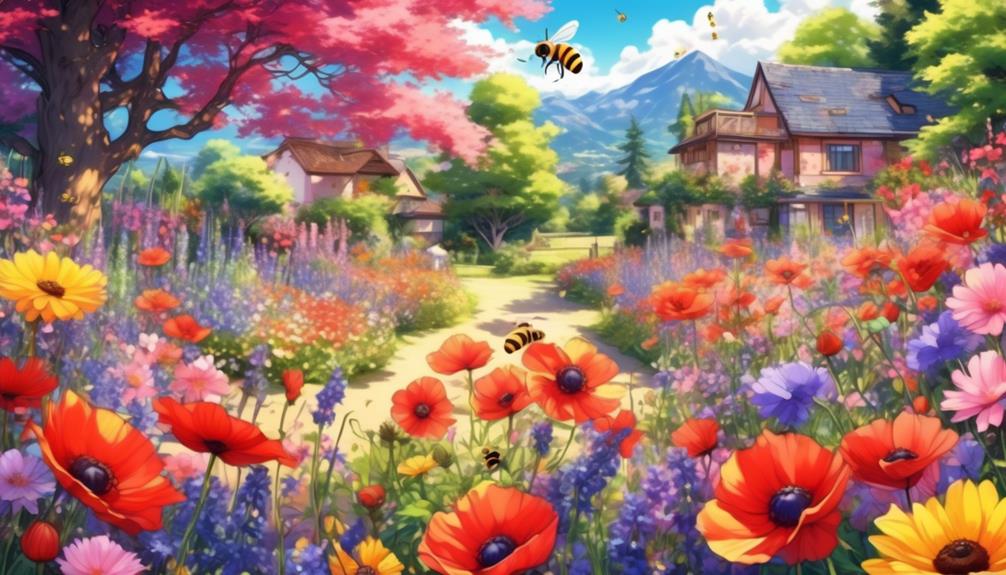
Colorful flowers play a crucial role in creating bee-friendly gardens by attracting bees for pollination. If you want to attract bees to your garden, consider planting a variety of flowers that aren’t only easy to grow but also have vibrant colors. Here are some flower options that will add beauty to your garden while attracting bees:
- Lavender: Known for its vibrant purple flowers and aromatic scent, lavender attracts bees with its nectar-rich blooms.
- Sunflowers: These iconic flowers with large yellow petals and a dark center are a favorite of bees, providing ample pollen and nectar.
- Coneflowers: With their daisy-like appearance and vibrant colors, coneflowers attract bees with their nectar-filled center disks.
- Borage: This herb produces clusters of star-shaped blue flowers that bees find irresistible due to their copious amounts of nectar.
- Salvia: With its long spikes of vibrant flowers, salvia is a magnet for bees, offering a generous supply of nectar throughout the blooming season.
- Black-Eyed Susan: These cheerful yellow flowers with dark centers attract bees with their abundant nectar and provide a burst of color in the garden.
- Hollyhocks: Tall stalks adorned with large, showy blooms in various colors, hollyhocks are a favorite of bees due to their nectar-rich flowers.
- Crocus: Blooming early in the spring, crocuses provide an important food source for bees, offering nectar and pollen when little else is available.
- Cosmos: These delicate flowers with feathery foliage come in a range of colors and are highly attractive to bees, providing ample nectar.
- Phlox: With its clusters of fragrant, colorful flowers, phlox is a bee-friendly plant that offers nectar and pollen throughout the summer.
These flowers will not only enhance the beauty of your garden but also attract bees with their vibrant colors, fragrances, and nectar-rich blooms.
‘Did You Know? Bees aren’t only attracted to the color and scent of flowers but also their shape and patterns. Some flowers, like snapdragons, have evolved to have ‘bee landing platforms’ to invite their pollinator friends.’
Perennial Plants for Long-Term Bee Attraction
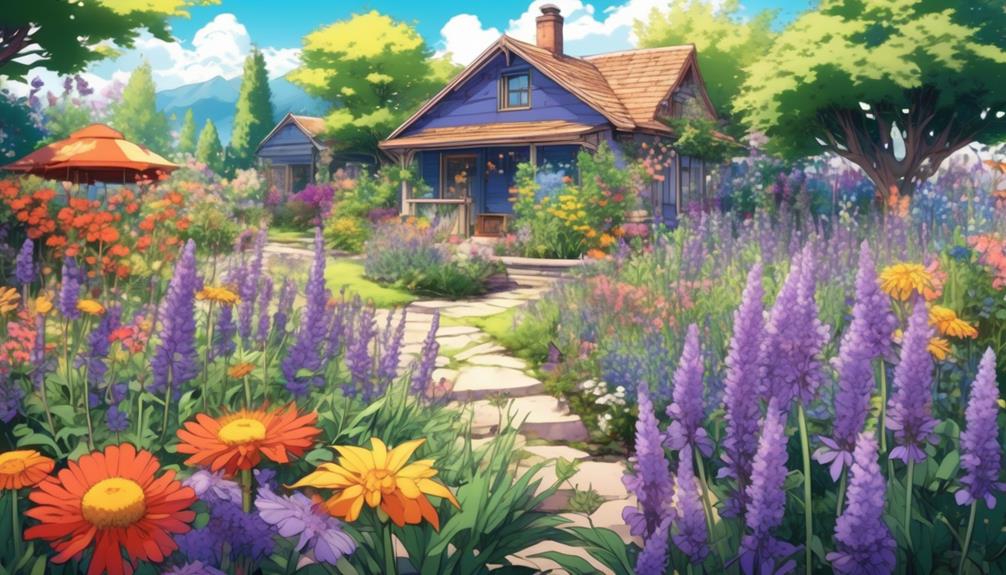
When creating a garden that attracts bees, it’s important to choose perennial plants that provide a sustainable and long-term source of nectar and pollen.
Perennial plants are an excellent choice because they come back year after year, providing a continuous food source for bees. Different species of bees have different preferences, so incorporating a variety of perennial plants can attract more pollinators to your garden.
One popular perennial plant for bee attraction is bee balm (Monarda), which produces vibrant flowers in shades of red, pink, and purple. Another great option is echinacea, also known as coneflower, which features beautiful daisy-like flowers in various colors. Lavender is another favorite among bees, with its fragrant purple flowers that are rich in nectar.
Salvia is a perennial plant that comes in many different varieties and produces spikes of flowers in shades of blue, purple, pink, and white. Yarrow is another bee-friendly perennial that features clusters of small white flowers.
Adding Herbs to Attract Bees
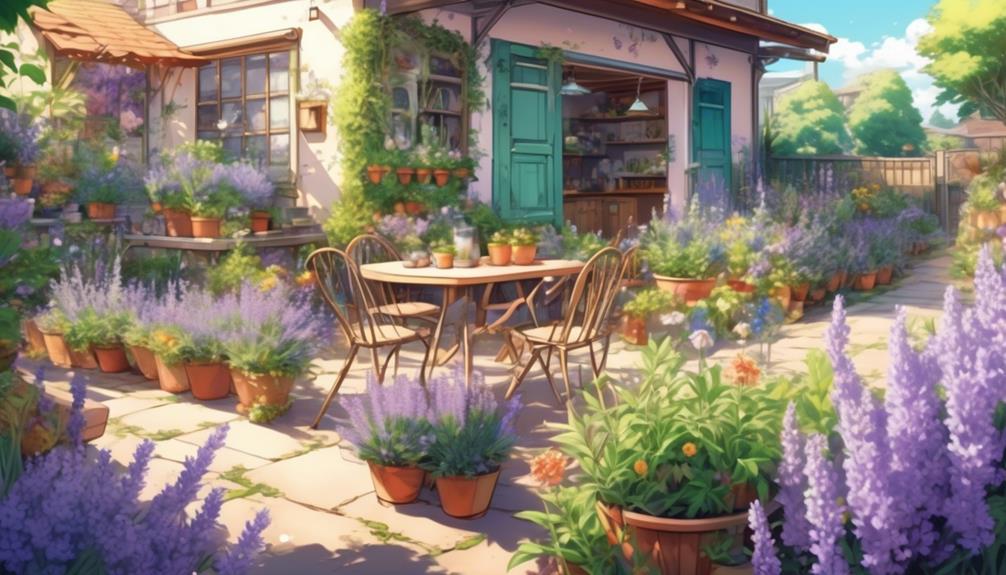
Herbs with small nectar-rich blooms, such as rosemary, thyme, and mint, are excellent additions to attract bees to your garden. These bee-friendly herbs provide a valuable food source for various bee species, including Honey Bees and other pollinators. Adding herbs to your garden not only enhances its beauty but also supports the health and well-being of bees and other important pollinators.
Here are three bee-friendly herbs that you can consider adding to your garden:
- Basil: With its fragrant flowers, basil isn’t only a culinary delight but also a great herb to attract bees. Its blooms provide a rich source of nectar, making it a favorite among many bee species.
- Oregano: This flavorful herb isn’t just loved by humans but also by bees. Oregano produces small flowers that are rich in nectar, making it an ideal choice for attracting bees to your garden.
- Lavender: Known for its calming fragrance, lavender is a favorite among bees. Its vibrant purple blooms aren’t only visually appealing but also provide a bountiful supply of nectar for bees and other pollinators.
Creating a Bee-Friendly Garden Design
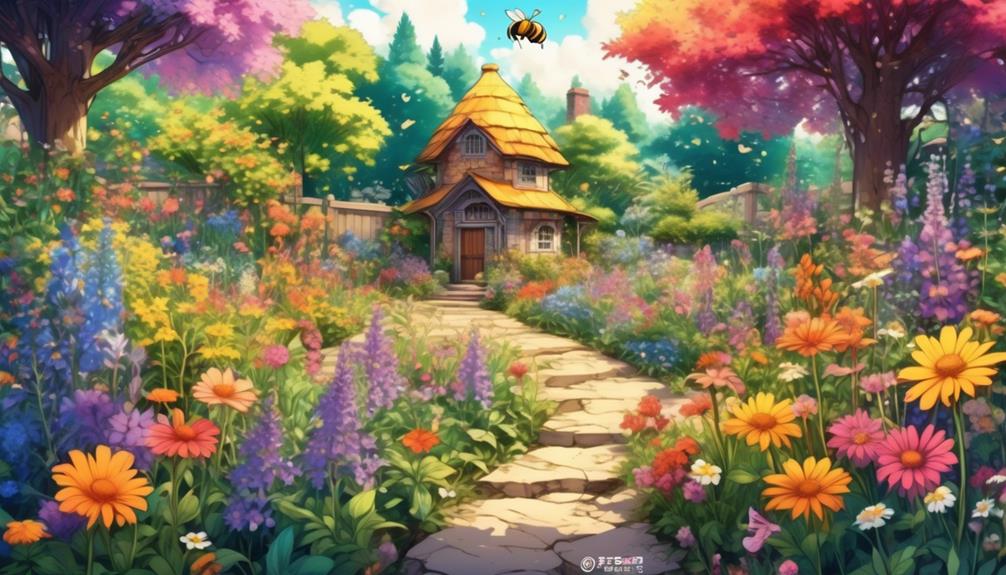
To create a garden design that attracts bees, choose plants that are attractive to these pollinators, such as bee balm, echinacea, and snapdragon. These flowers have vibrant colors, enticing scents, and nectar-rich blooms that bees love. Avoid flowers that don’t attract bees, like eucalyptus, ferns, and lemongrass, as they won’t provide the desired bee-friendly environment. Also opt for organic fertilizers over toxic pesticides to ensure the health of the bees and the environment.
Incorporate a variety of bee-friendly flowers into your garden design to provide a diverse food source for bees. Consider adding peonies, lantana, and sunflowers, as they’re known to attract bees with their bright colors and plentiful nectar. Plant these flowers in sunny spots with well-drained soil to create the optimal conditions for bee activity.
To support native bees, prioritize native plants in your garden design. Native plants have evolved alongside native bees and provide them with essential food sources. Additionally, provide a succession of flowers throughout the growing season to ensure a consistent food supply for bees. Creating nesting sites in different locations, such as bee houses or bare patches of soil, can also help native bees thrive in your garden.
‘Did You Know? There are over 20,000 different species of bees in the world, and each one has a unique role in the environment. In fact, bees are responsible for pollinating about one-third of the food we eat, making them vital for our survival and the health of the planet.’
Bee Friendly…
Transform your garden into a buzzing oasis by planting bee-friendly flowers and herbs. These tiny pollinators are nature’s superheroes, ensuring the growth and abundance of our food crops.
By avoiding harmful chemicals and opting for organic fertilizers, you also create a safe haven for bees to thrive. So, embrace the beauty of colorful flowers, the fragrance of herbs, and the joy of watching bees dance among your plants.
